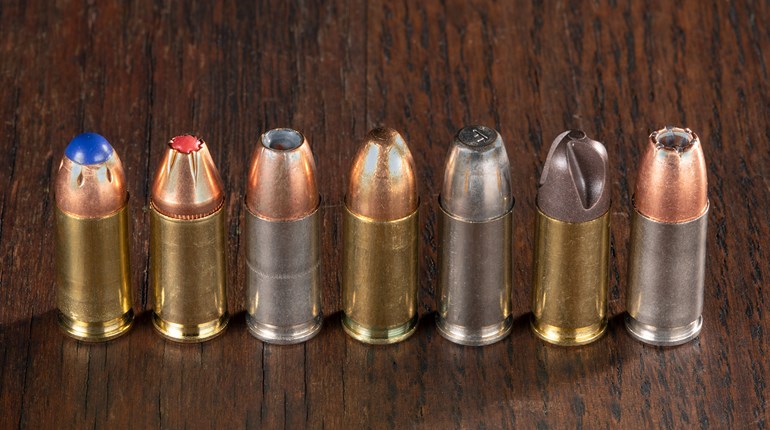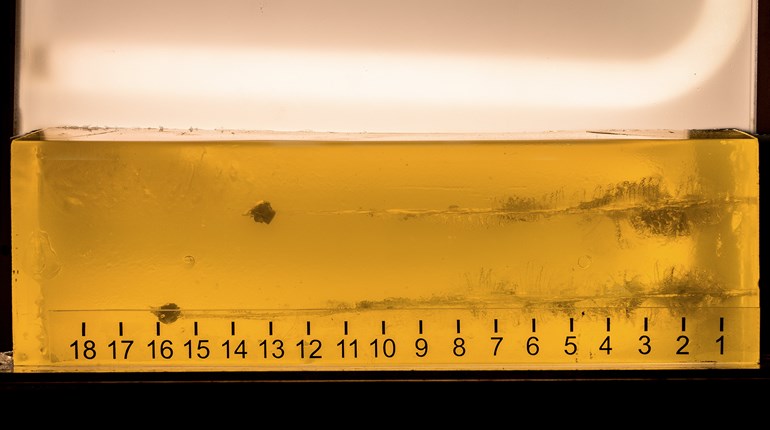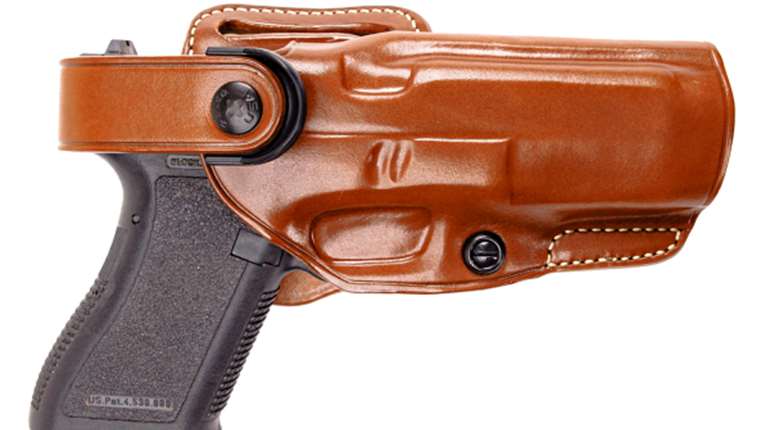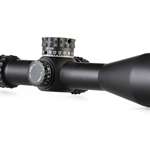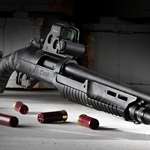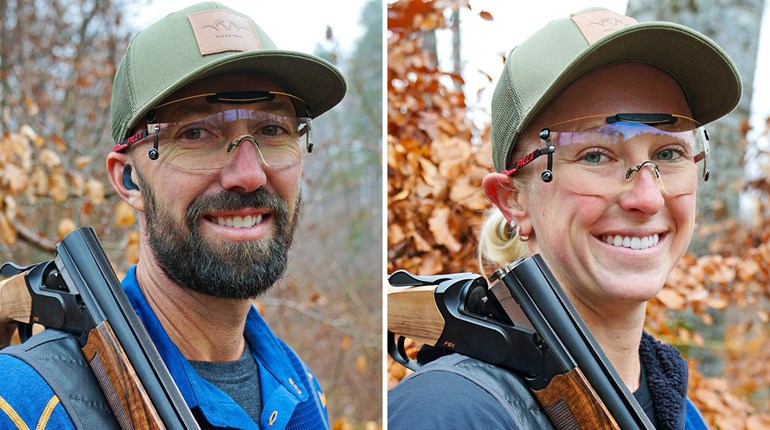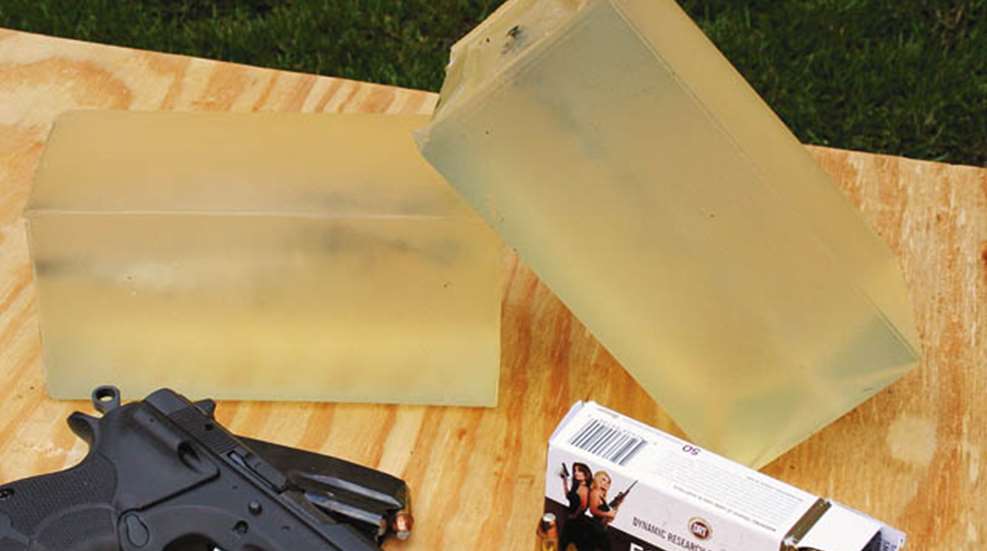
Why should you care about terminal ballistics? Because the way a bullet penetrates and damages tissue determines how effective it will be at stopping murderous trolls. Tests in ordnance gelatin (OG) can help determine which cartridge, load or bullet best suits your needs.
For example, some loads will not produce sufficient velocity out of short-barreled handguns to properly expand. Bullets that don't expand, and some that do, can penetrate excessively. These can be a poor choice for self-defense in a home or apartment complex. You don't want to shoot through the bad guy and the wall separating you from another room, especially if your child or neighbor is on the other side. On the other hand, you may live in a cold climate and need a bullet that will still expand after passing through heavy clothing.
Short of trusting advertisements, gun writers or your local firearms expert, the only way you can be sure about bullet performance is to do your own testing. Ammunition may be expensive, but life is invaluable. For the price of a date with your wife, or one night looking for a date, you can test more than two dozen loads. It's comforting to see the capabilities of the ammo in your .380 ACP pocket pistol or the nightstand 1911.
In the late 1980s, the FBI established 10-percent OG as its medium for bullet testing. Since then it has become the de facto standard. Ten-percent OG is made from type-B gelatin, which is obtained by the partial hydrolysis of collagen derived from the skin, white connective tissue and bones of animals. Ordnance gelatin is not the stuff we grew up watching Bill Cosby peddle on TV.
I've tested lots of bullets in OG. I've also shot bullets into the Bullet Test Tube, Perma-Gel, Sim-Test, water and water-soaked newspaper. All can be used to evaluate terminal performance, but OG is the medium for which the most test data is available. You can find OG results in books and on the Internet, but there is nothing like seeing it with your own eyes. Likewise, there is no substitute for testing ammunition from your own gun.
Because of the research I do for Shooting Illustrated, I frequently mix OG. Initially, I hated it; watching a chick flick was more fun. Out of necessity, I came up with a near-painless process. Most people make OG in large, open molds. The stuff smells bad and until it sets up, it can spill. Trust me; you don't want that mess in your fridge—if it happens, your spouse won't want you.
Standard OG test blocks measure 6.25 inches square by 16 inches long and weigh 20 pounds each. They take up too much room in the fridge and are difficult to handle. For testing most handgun cartridges, I suggest using three, 4.6-pound blocks formed in half-gallon containers. Milk and orange juice are available in half-gallon cardboard containers with a screw-off top. Start saving these for your OG molds.
If you purchase from Gelatin Innovations, a 10-pound box of gelatin costs $90, and you'll also need 4 ounces of de-foamer. If you use half-gallon containers like me, 10 pounds should let you test at least 24 handgun loads. The company also offers a $90 kit that includes three pre-measured gelatin packs, a standard-size mold, three mold liners and de-foamer. With this kit, you can test 15 or more handgun loads or four to eight 5.56 NATO loads.
Ten-percent OG is called 10-percent OG because it is mixed—by weight—at a 9:1 ratio with water. The mixing instructions on the Gelatin Innovations website are for making a 20-pound block. If you mix for the three half-gallon containers, you'll need to reduce the quantities. You'll also need a candy thermometer, funnel, stirring spatula, 5-gallon bucket and something in which to heat the water. Use de-foamer to cut down foam production during mixing and oil of cinnamon to prevent bacteria buildup and to mask the smell.
After mixing, use a funnel to fill the containers through the screw-off cap. Put the cap on, and let them cool for 4 hours at room temperature. Then, place the containers in a refrigerator set at 39 degrees Fahrenheit for 24 hours. The cardboard containers make it easy to transport OG in a cooler to the range. Just cut away the cardboard to shoot. Depending on the performance level of the ammo, you should be able to test up to four defensive handgun loads in three blocks. Always shoot OG on a safe range and don't assume bullets will stop in the blocks. All common firearms safety practices should be observed.
The FBI requires OG blocks to be calibrated by firing a .177-caliber steel BB at 590 fps +/- 15 fps, into the block. The BB should penetrate between 2.95 inches and 3.74 inches. I used to do this, but never having a block fail, I stopped. Bob Brunet with Gelatin Innovations said if you use the company's gelatin and follow its mixing procedures, you can be confident in the consistency of your blocks.














